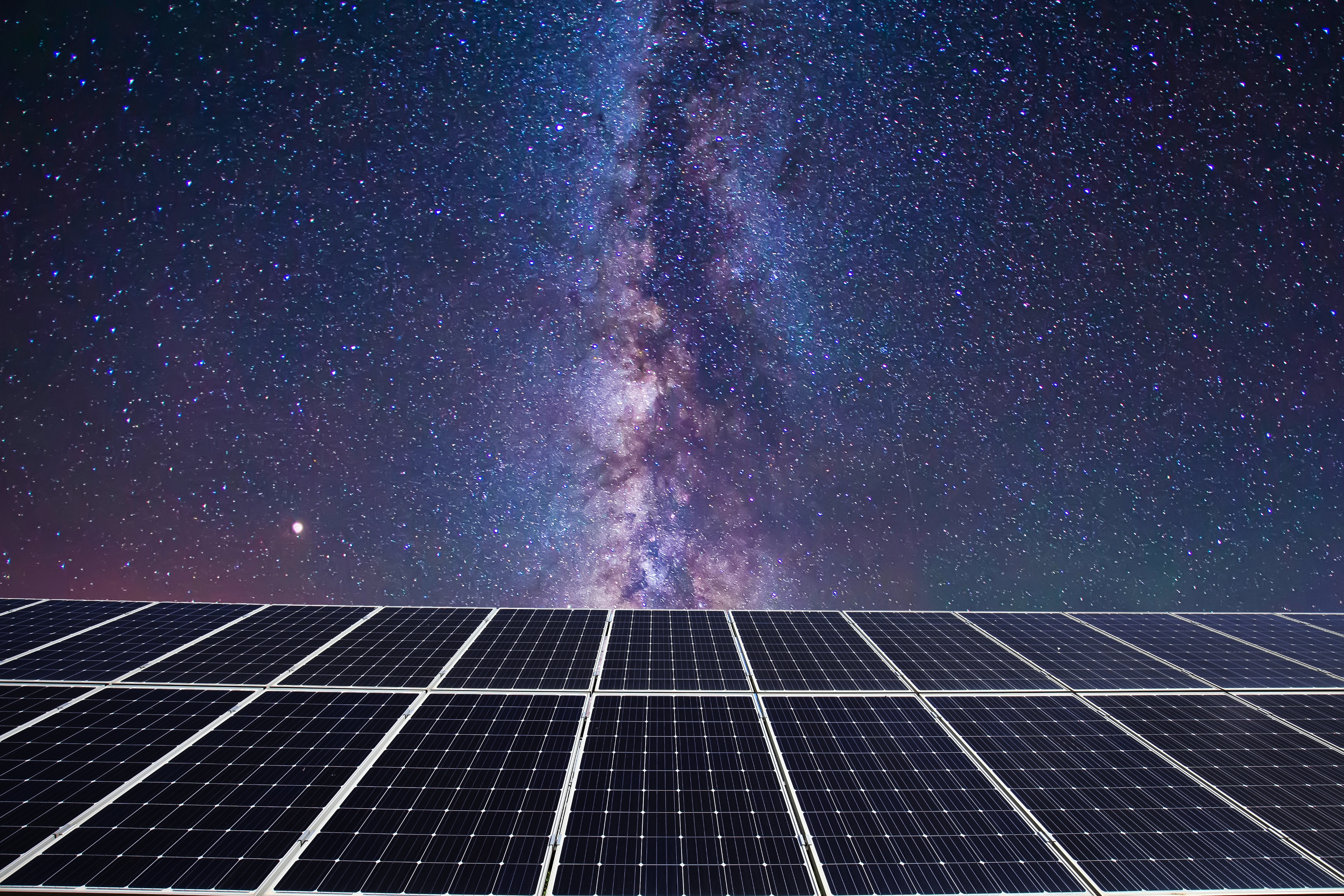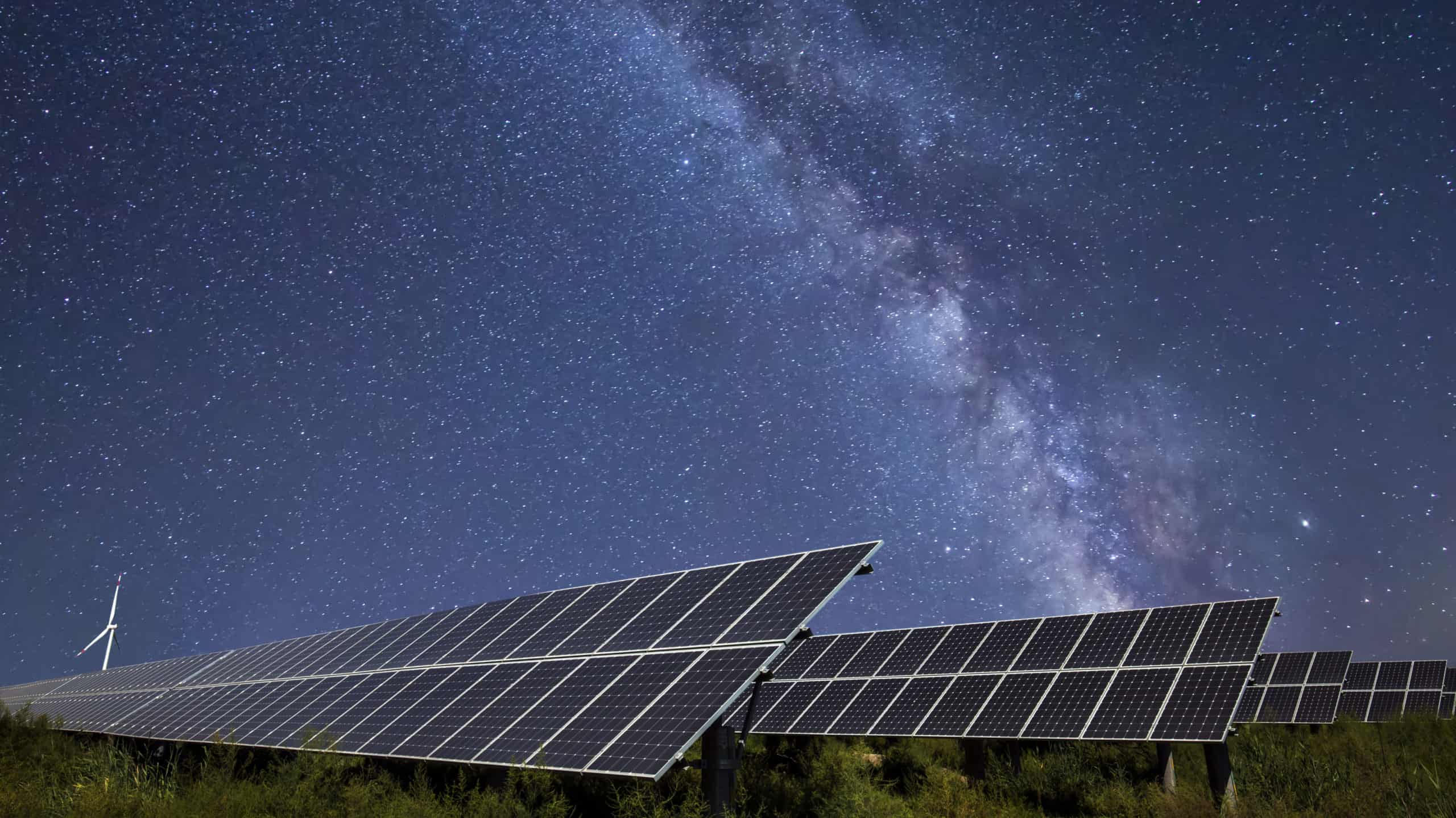
Most everyone knows that the moon does not produce light on its own, but rather reflects the light of the sun. While we do see this lesser sunlight, it does not affect solar panels the same way that actual sunlight would.
Solar panels can convert moonlight into energy, however the energy produced is down by a factor of 345:1, meaning 3450 W of energy is produced during high sun, and only 10 W of energy is produced during a full moon. Solar panels need a ratio of 1:1 to actually function, so they do not work at night.
While solar panels do not convert enough energy to function during nighttime, houses still receive power at night. Keep reading to learn more.
Solar panels at night
You might wonder why solar panels do not often run at nighttime, even though the moon is still reflecting sunlight down on us. While moonlight is just lessened sunlight, it does not produce enough energy for solar panels to fully function.
Solar panels can work in a wide variety of weather and climates, although some do better than others. Naturally, as you might have guessed, full sun will create the most energy, and heavy clouds will produce the least amount of energy. Moonlight, however, produces the least of all. In fact, moonlight only produces about 10 Watts from solar panels whereas full sun at noon produces 3450 Watts of energy.
This ratio of 345:1 is quite a big difference from sunlight to moonlight. To produce such a small amount of energy just is not worth the effort. Because of this, most solar panels go into a “night mode” where they power down at night.

But what happens if you still need electricity at night? Maybe you work the night shift and sleep all day, so you do not need any power during the sunny hours, but you really need power after the sun has gone down. Or maybe you just like to stay up late and sleep in. No matter the reason, people still need electricity at night as well as the daytime.
Solar panels collect power all day, and usually produce more than the average person uses up. This creates a surplus of power that you can then use at nighttime. You have a few options about how to store this extra power. One option is to send the surplus eletricity produced by your solar panel off to a utility grid to store it until you need to use it (this is called net metering). You can also use solar battery storage to store the extra electricty produced throughout the day. Both of these methods allow you to access power at night, even though your solar panel is not producing any electricity.
How do solar panels work?
Solar panels work by converting energy from the sun into direct current. This direct current is also commonly referred to as photovoltaic (PV) energy, meaning “light electricity.”
The panels are made up of smaller units called solar cells, which are made out of different layers.

The layers are typically glass on top, antireflection coating, a metal grid, two types of silicon, and a metal sheet on bottom.
- The glass is there to protect the rest of the layers from anything that might damage them, such as dirt, debris, hail, etc.
- The antireflection coating allows the sunlight to pass through it, but prevents the light from reflecting off of the shiny silicon layers and back out of the cell. This effectively traps the light inside the cell to use. Trapping the light helps to raise efficiency of the cell. Otherwise, most of the sunlight would reflect back out and would be useless.
- The silicon layers act as semi-conductors. Phosphorus is added to one of the silicon layers to give the element extra unbonded electrons. Boron is added to the other layer of silicon to create an opening for those electrons to go. When the extra electrons move from the phosphorus layer to the boron layer, the phosphorus layer is left with a positive charge (from lack of electrons) and the boron layer is given a negative charge (from the extra electrons). This imbalance of charges gives the cell an electric field.
- The metal grid on top of the silicon layers and the metal at the bottom of the silicon layers act as conductors to create a circuit for the electric field. This circuit creates the direct current (which is then converted into alternating current) that we use to power our homes.
This process only creates about a half volt of energy per solar cell. This is why solar panels are made up of numerous cells, and solar arrays are made up of numerous panels.
At night, there is not enough sunlight shining through the cell to provide enough energy for the process to work well. The amount of direct current produced from moonlight is so small that it is not worth all of the fuss.
Do inverters turn off at night?
When solar panels create power, they create it in the form of direct current. This direct current needs to be converted into alternating current for us to be able to use it in our everyday lives.
An inverter is a device that converts direct current into alternating current. Without an inverter, solar panels would be useless because most commercial appliances use alternating current to work.

So what happens to your inverter at night when your solar panel goes into its rest mode? Your inverter will also shut down if it is not receiving enough energy from your solar panel. Inverters can even shut down if it is too cloudy outside. This can happen because there is not enough sunlight to produce sufficent power. But no need to worry! As soon as your solar panel starts creating energy again, your inverter will turn back on and get back to work. To sum up: if your solar panel is working, then your inverter is working, and if your solar panel is sleeping, your inverter is too.